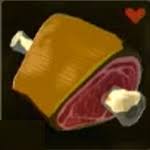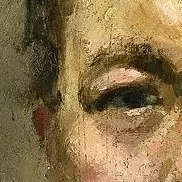- 75 Posts
- 49 Comments

 1·1 year ago
1·1 year agoAll religions have weird beliefs, that’s why they’re religions and not facts.
Yes, tape has very steep entry costs and requires maintenance and storage.
Most of the time it doesn’t make sense for a person to use it, but rather a corporate entity that needs to backup petabytes of data multiple times a day.
So tape doesn’t make sense for the typical person, unless you don’t have to buy the equipment and store i.
But, if you’re even a small company it becomes cheaper to use tape.
Companies don’t like deleting data. Ever. In fact some industries have laws that say they can’t delete data.
For example, the company I work in is small, but old. Our accounting department alone requires complex automated processes to do things each day that require data to be backed up.
From the beginning of time. I shit you not. There is no compression even.
And at the drop of a hat, the IT dept needs to be able to implement a backup from any time in the past. Although this almost never happens outside of the current pay cycle, they need to have the option available.
The best way they have to facilitate this (I hate it - like I said they’re old) is to simply write everything multiple times a night. And it’s everything since we started using digital storage. Yes, it’s overkill and makes no sense, but that’s the way it is for us. And that’s the way it is for a lot of companies.
So, when we’re talking about that amount of data, and tape having a storage cost advantage of 4:1 over disk, it more than pays for all the overhead for enterprise level backups.
deleted by creator
Agreed - although I didn’t realize about the size, that’s even more incredible. I’ll have to see if there’s any around me.
That is funny tho, thinking about the art vs the artist’s intent.
In this case, the artist made a great many of these, and decided to call them elements.
Then, you posted 33 here.
Then I, acting upon only the context of the painting and title, decided to look up what element 33 was.
And now when I look at all those beautiful paintings I only think of arsenic. Whereas if I had seen them all together, the element number would’ve been basically meaningless - just an interesting way to name paintings that don’t really have names.
So, in that case, I thank you for the opportunity to have more attached meaning to this than would’ve otherwise been allowed.
I realize that I left this part out of my citation above… Arsenic is found in prawns I guess, which live in the ocean. Beyond that, I’m not sure either, but the work is called element 33, and element 33 is arsenic.
Perhaps it’s a comment on suicide or perhaps the drudgery of common life, or perhaps the fear invoked by seeing nothing but water. That’s just me though, that’s what I thought about as I looked at this work.
Edit: re-reading my citation above, I realize I left out the part where prawns are a major source of Arsenic.
Element number 33 is Arsenic
Uses
Arsenic is a well-known poison. Arsenic compounds are sometimes used as rat poisons and insecticides but their use is strictly controlled.
Surprisingly, arsenic can also have medicinal applications. In Victorian times, Dr Fowler’s Solution (potassium arsenate dissolved in water) was a popular cure-all tonic that was even used by Charles Dickens. Today, organoarsenic compounds are added to poultry feed to prevent disease and improve weight gain.
Arsenic is used as a doping agent in semiconductors (gallium arsenide) for solid-state devices. It is also used in bronzing, pyrotechnics and for hardening shot.
Arsenic compounds can be used to make special glass and preserve wood.
Biological role
Some scientists think that arsenic may be an essential element in our diet in very, very low doses. In small doses it is toxic and a suspected carcinogen. Once inside the body it bonds to atoms in the hair, so analysing hair samples can show whether someone has been exposed to arsenic. Some foods, such as prawns, contain a surprising amount of arsenic in a less harmful, organic form.
Natural abundance
A small amount of arsenic is found in its native state. It is mainly found in minerals. The most common arsenic-containing mineral is arsenopyrite. Others include realgar, orpiment and enargite. Most arsenic is produced as a by-product of copper and lead refining. It can be obtained from arsenopyrite by heating, causing the arsenic to sublime and leave behind iron(II) sulfide.

 2·1 year ago
2·1 year agoWow, this is awesome.

 3·1 year ago
3·1 year ago“A woman holds part of her elaborate garment over a silver censer to capture the perfumed smoke of smoldering ambergris. A waxy substance extracted from whales, ambergris was used in some religious rituals and was also said to have aphrodisiac qualities. Sargent began this painting in Tangier, with a model posed on the patio of a rented house, but he completed it in his Paris studio. The finished painting presents a fantasy for Western eyes, combining details of costume and setting adapted from different regions across North Africa.”
https://www.clarkart.edu/ArtPiece/Detail/Fumee-d-ambre-gris-(Smoke-of-Ambergris)-(2)

 2·1 year ago
2·1 year agoDefinitely. I didn’t even know ambergris was a thing outside the book. Gross word, ok book tho. I wish there would a been more about the mushroom-people cult. And this painting definitely gives me mushroom-people vibes.

 4·1 year ago
4·1 year agoIs this from the Vandermeer book?

 31·1 year ago
31·1 year agoWow, ok. Thanks for the insight. Very interesting.

 51·1 year ago
51·1 year agoI hate to pick nits, but wouldn’t his hands have stigmata only after carrying the cross?
I suppose it’s symbolism perhaps.

 2·1 year ago
2·1 year agoI think he painted and sketched before that, but this was the first thing he painted on an easel - but there is speculation that it’s not his.
Yes, and you can see it for free at
Tate Modern, Bankside, London SE1 9TG, United Kingdom

 2·1 year ago
2·1 year agoGreat factoid and great un.

 3·1 year ago
3·1 year agoNo worries. It was daunting trying to tie it up. I’m actually kinda releaved. I had worked on it for like 2 weeks and still had no ending in sight. So I’m glad to dramatically summarize here. It’s probably how I should write these anyway.

Ned Kelly
Summarized from Wikipedia
Ned Kelly was a folk hero of Australia - think Bonnie & Clyde, Billy the Kid and Robin Hood combined. He was an outlaw of the lawless frontier of Australia in the 1800s and an activist against the growing organization of the Australian bush and the Squattocracy (settlers of the bush who farmed/grazed the land but had no legal ownership). He is especially known for his last stand against police, in which he donned a bulletproof suit.
https://en.wikipedia.org/wiki/Ned_Kelly
Analysis
sidneynolantrust.org
"Kelly is riding alone, across an open plain. The sharp sunlight delineates all the forms before us - the horse, Kelly’s gun, the distant tree line on this yellow sandy expanse. Everything is clearly and quickly articulated except for that famous body armour and helmet, which magically absorbs all light. Indeed, it is as if light particles are ‘bailed up’ and robbed by the event horizon of this formal black hole. Kelly’s helmet and armour become unknown volumes: both flat and a window into infinite space. Apollo’s order and sunlight is no match for a Dionysian Kelly, who in this instance may be simply riding, but if needed, he will dismount, disarm, endure 20 rounds of bare knuckle boxing and win.
This painting of Kelly is arguably the most well known of all Nolan’s works, and certainly the most recognisable of his initial Kelly series. Nolan depicts Kelly riding freely and, more importantly, for his own sense of freedom. We are given a vision of Kelly, the firebrand anti-establishmentarian, in a very precious moment. We are alone with him, away from the gang and all the transpiring drama. From this moment of solitude, we envisage our outlaw riding into his destiny.
Nolan’s image is a technical mirroring of its subject matter. It is also painted ‘freely’, in the spirit of our great anti-hero, Kelly. Nolan’s technique dances above and around the strict academic laws of volumetric illusion, typically achieved through tonal modelling, accurate proportion and perspective. Nolan instead plays the game of figurative representation in his own idiosyncratic way, subverting artistic convention in the creation of a very ‘modern’ composition.
The image has such a graphic intensity that it burns into one’s retina, and even deeper into the individual unconscious. Soon enough, this image of Kelly gallops directly into the collective imaginary of an entire nation and the primers of art history. The 1946 Kelly will effect a shift from being one of many representations of Kelly to possibly the most recognised artistic symbol of this man. Even in terms of other dramatisations of Kelly, can the film interpretations of Mick Jagger or the late, great Heath Ledger, or Julian Schnabel’s ‘plate painting’ of Kelly, ever come close to claiming the iconic power of Nolan’s 1946 Kelly?
A great mystery of the painting is the much speculated upon visor in Kelly’s helmet. To see directly through the helmet form (which we know from Nolan’s statements, was inspired by Malevich’s black square) is to enter a wonderful representational dilemma. Is Kelly hollow, or a ‘body without Organs’ as the French philosopher Gilles Deleuze would put it? Is ‘Ned’ constructed purely of mythic surfaces? Nolan would later famously state that every painting of Kelly was in fact a self-portrait. The transparent visor in the helmet suggests that we can all inhabit this empty armour and ask ourselves: do we have it within us to be so wild, so passionate, so revolutionary?
The see-through helmet also destabilises the otherwise clearly defined figure/ground relationship. Kelly is stark against the immediate surroundings, but this vivid nature is also within him. Kelly’s agency is extended into the sky through this very powerful pictorial device. To be simultaneously solid and transparent – a dark Dionysus framing Apollo’s light. Given Nolan’s great interest in poetry, I cannot go past images conjured in T.S. Elliott’s ‘the Hollow Men’ (1925). While this poem might not be comparable in thematic, as far as imagery goes the poet’s utterances of “shape without form, shade without colour…”, “The eyes are not here, There are no eyes here…”, “Behaving as the wind behaves” and of course, the poems title, are all evocative of Nolan’s eventual 1946 Ned Kelly portrayal.
We simultaneously look at Kelly and look through him, but from behind, as with Casper David Frederich’s Wander Above the Sea of Fog (1818) (this time on a plain rather than a peak). As with Frederich’s figure, we assume we are seeing what Kelly is seeing before him – a vast open expanse. However, instead of us simply looking at Kelly who in turn ‘looks out’, Kelly is looking back at us through the sky itself. He is there before us and already away, taking Nolan with him, into the afternoon, then evening, and into a posterity of open sky and brilliant stars."
https://www.sidneynolantrust.org/nolan-100/ned-kelly-82/